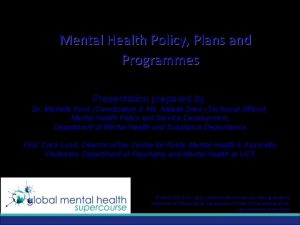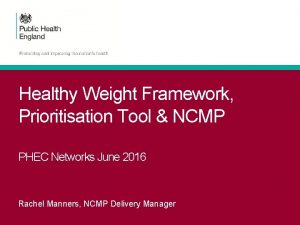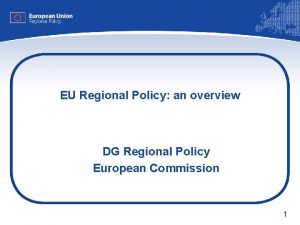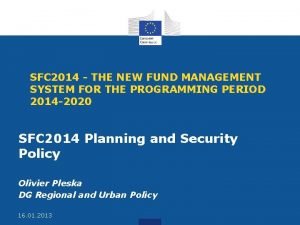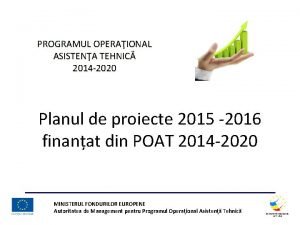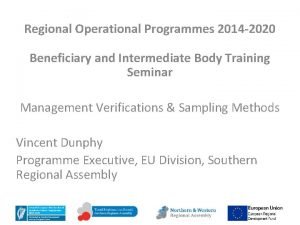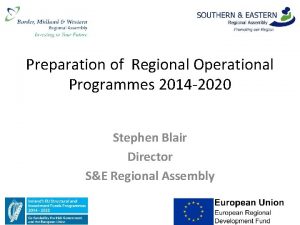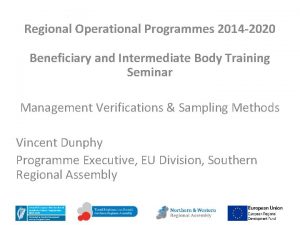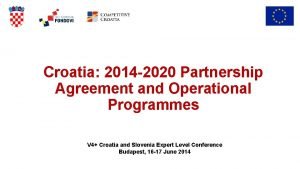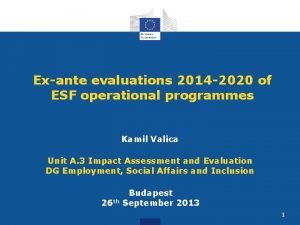2014 2020 Operational Programmes Regional Policy Overview of








- Slides: 8

2014 -2020 Operational Programmes Regional Policy

Overview of First OPs Examined • In first drafts, specific objectives usually not specific: impossible to assess intervention logics when specific objectives vague, general and all encompassing • Second versions usually much better • Result indicators and baselines: use of available data or special surveys (possibility to use ex ante conditionality and provide baselines later in line with an action plan) • Remember to use common indicators • Performance Frameworks only after intervention logic clear Regional Policy

"Specific" Objectives – Bad examples • "Promoting foreign direct investments, research and development and driving the demand for investments to increase investments from the private sector in RDI" • "Promoting the implementation of innovation in a wide sense" • "Development of economic potential in disadvantaged areas of the region" Regional Policy

Specific Objectives – Good examples • "Increase the number of high growth enterprises" • "Increase the number of SME start-ups" • "Reduce CO 2 emissions through reduced energy consumption of public buildings" Regional Policy

Common Indicators – small changes in Guidance Change in use of indicators • Indicator no. 1 'Number of enterprises receiving support' • Innovation (also concerns indicators 28 & 29) • Energy efficiency • Indicator no. 5 'Number of new enterprises supported' • Innovation (spin-off companies, high-tech start-ups, etc. ) • Indicators no. 6, 7 & 27 (matching private investment) – simplified • Indicator no. 9 'Increase in expected number of visits at supported sites of cultural or natural heritage and attraction' • Calculations can be based on demand analysis Regional Policy

Ex Ante Evaluations • We have seen very few • Some we have seen do not seem to provide sufficient support to MAs in developing the intervention logics of the programmes • Tool for the OPs' negotiations (e. g. justification of choice of indicators, milestones and targets, in particular for performance framework) • This should be sufficiently developed in the ex ante evaluation report sent with the OP to the Commission • Are they in time? Regional Policy

Questions • What is the state of play in the development of the programmes? • What is your involvement in the development of the programmes and the negotiations? • How are you managing the ex ante evaluations? Are you involved? • Are the ex ante evaluations in time? • Do you need any more support from the Evaluation Unit of DG REGIO? Regional Policy

Thank you for your attention! http: //ec. europa. eu/regional_policy/impact/evaluation/index_en. cfm Regional Policy

